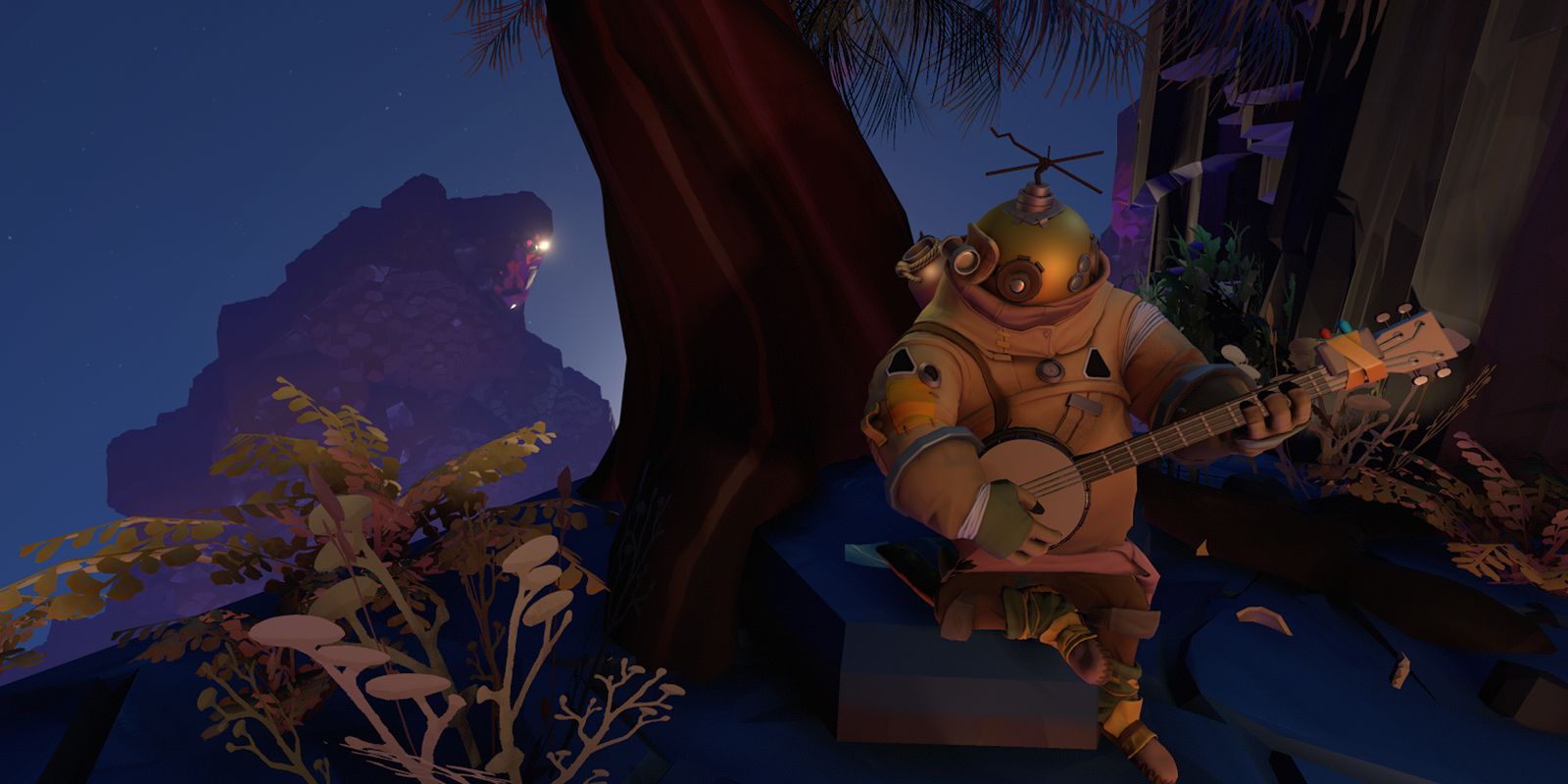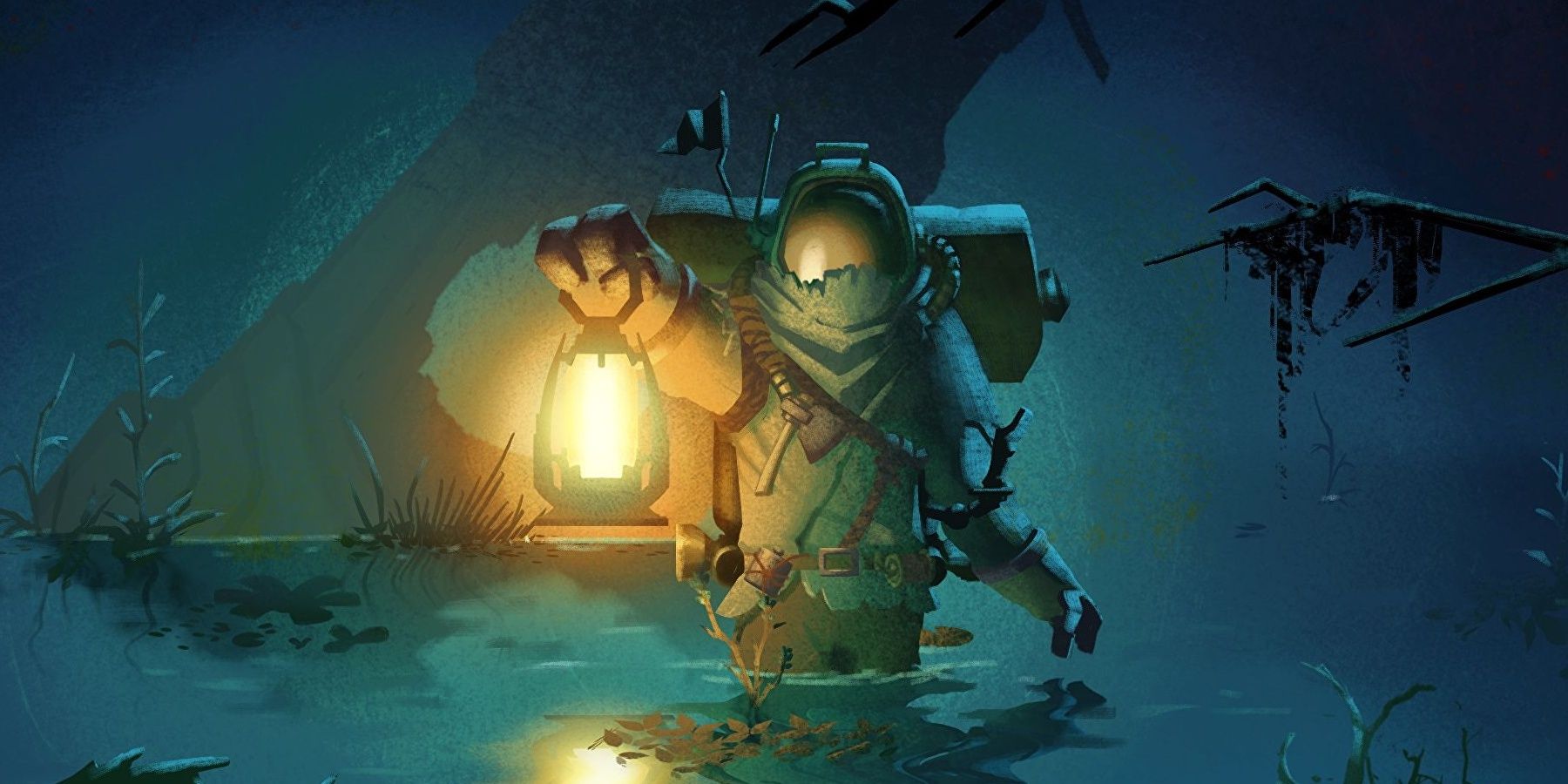Video games are an art form, and some are far more focussed on the experience of playing than any other aspect. Mobius Digital and Annapurna Interactive’s adventure game, Outer Wilds, is one such a game that focuses on experience, exploration and teaching. Of course, a game with these concepts at the forefront is not normally aiming for high intensity.
Outer Wilds is a slow game, but that slowness is fundamental. It is a building and driving force that adds a sense of awe to the exploration, balancing the dire situation of a dying galaxy with the calmness of second chances — and that’s the point. Outer Wilds teaches players that patience is what saves the galaxy.
From the moment players awaken in their first loop on Timber Hearth they are met with the stars. As a game about space exploration, this is an appropriate first sight. Yet, there are other important details upon awakening. Players will also encounter a friend, Slate, sitting by a campfire. It may be a players first instinct to speak to Slate, then run away following their next objective, but Outer Wilds includes little details, like cooking a marshmallow over the fire for instance, that encourage players to slow down.
Small details, like cooking a marshmallow or reading a plaque on a statue, are deliberate features meant to make the player pause. An in-game universe focussing on time-loops and cycles may make players want to rush to into their next run with a sense of déjà vu. Additionally, it may even generate some frustration if a player is looking at the game as something to be beaten rather than something to experience.
This is why the campfires scattered about the galaxy are an important factor. They provide a moment of reflection, asking players to take it easy on this planet-spanning adventure. They provide both a place to think about what the player knows about the game already and to take in the atmosphere of the planet they are on.
It can be difficult to grasp that one isn’t meant to win on the first attempt, the second, or however many it takes. The player will not figure out how to save the galaxy in their first cycle, and that is the point. Outer Wilds isn’t a game to be rushed through. Its story and gameplay are based around learning to accept what you know and use it in the cycles to follow. The details in the environments of each planet both further the story and foster a gameplay style revolving around patience.
Players learn that they can’t save the galaxy right away and that it’s okay that they need to take their time. Outer Wilds asks the player to take it slow, learn about the galaxy they are trying to save and have some patience. The game doesn’t expect the player to have all the answers, skills or understanding to beat it on their first attempts. In fact, trying to rush a victory will probably just leave the player more confused.
Instead, Outer Wilds aims to show players that patience can solve a lot of things. It is a game that demonstrates that stopping by the campfire for a little while may help you figure out a missing piece of the puzzle. The game drives home the lesson that just because the player doesn’t have everything figured out right away doesn’t mean they never will. With some patience, persistence and maybe some marshmallows, players can save the galaxy in their own time.



